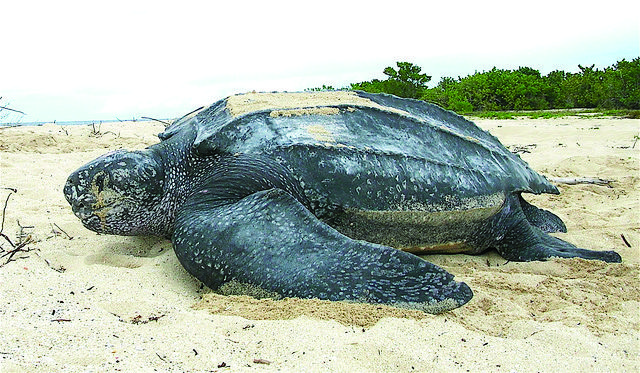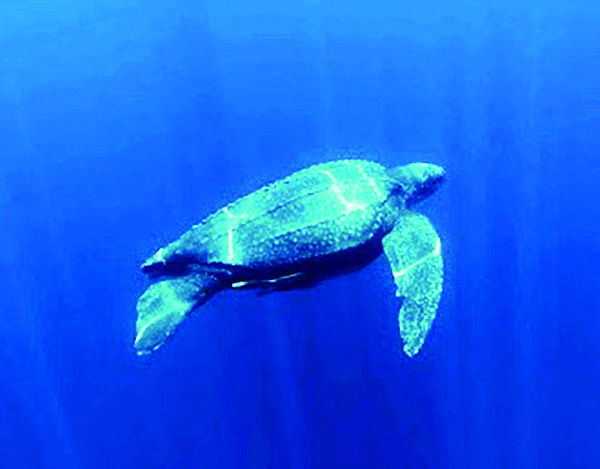By Capt. Chris Thalmann Contributing Writer



Sea turtle nesting season started March 1st in Florida. Here in Palm Beach County, early season is all about the leatherbacks. Leatherback sea turtles are by far the largest of the three species of sea turtles that commonly call our beaches home. Averaging about 6 feet long and weighing up to 1500 pounds in Florida, it’s easy to distinguish a leatherback from a loggerhead or green sea turtle just by size. Loggerheads and greens are much smaller, averaging “only” about 3 feet long and 300 pounds. In addition to being larger than any other sea turtle species, leatherbacks look very different too. They’re the only sea turtle that does not have a shell made up of scales or scutes. Instead – and true to their name – leatherbacks have a leathery-looking outer shell with a series of ridges that extend lengthwise. Leatherbacks are usually an inky-blue-black or very dark-grey color, with white, pink, and blue splotches along their bodies. The skin and shells of all species of sea turtles are multicolored and very striking, but no other sea turtle sports this combination of colors. One very special attribute of leatherbacks is that they’re much less affected by cold temperatures than other sea turtles. All turtles are reptiles, which means that they cannot regulate their own body temperature. When cold weather arrives, reptiles will often become lethargic and will move into sunny patches to stay warm during daytime. This is why you’ll see alligators sunning on canal and lake banks, and iguanas soaking up the sun on drawbridge fenders during cool spells. If they don’t warm themselves, they won’t have the energy to move, defend themselves, or eat. Cold water doesn’t seem to be an issue for leatherbacks. It’s thought that their leathery shell and thick fat layers are better insulators than the hard keratin shells of other sea turtles. And their massive size may contribute as well – larger muscles generate more heat inside that huge shell, allowing the turtles to stay warmer than the surrounding waters. That’s a rare and pretty handy skill to have. Especially as a cold-blooded animal whose range includes the Pacific and Atlantic, as far north as Alaska and the Canadian Maritimes, and as deep as 4,000 feet! All the more impressive is that leatherbacks primary food source is jellyfish – not exactly the most nutritious snack in the sea! Adult leatherbacks eat hundreds of pounds of jellyfish each day just to survive. So, while leatherback nests comprise a small fraction of the roughly 40,000 sea turtle nests that were recorded in Palm Beach County in 2019 and 2020, they play a huge role in our ecosystem, helping to keep jellyfish numbers under control here and worldwide. If you’re lucky enough to see one in the wild, enjoy the rare sighting! Then let it continue on as the world’s most unusual sea turtle. Hope to see you on the water!
Captain Chris Thalmann
Owner | Aqua Adventure Tours, Inc. • aquaadventuretours.com

